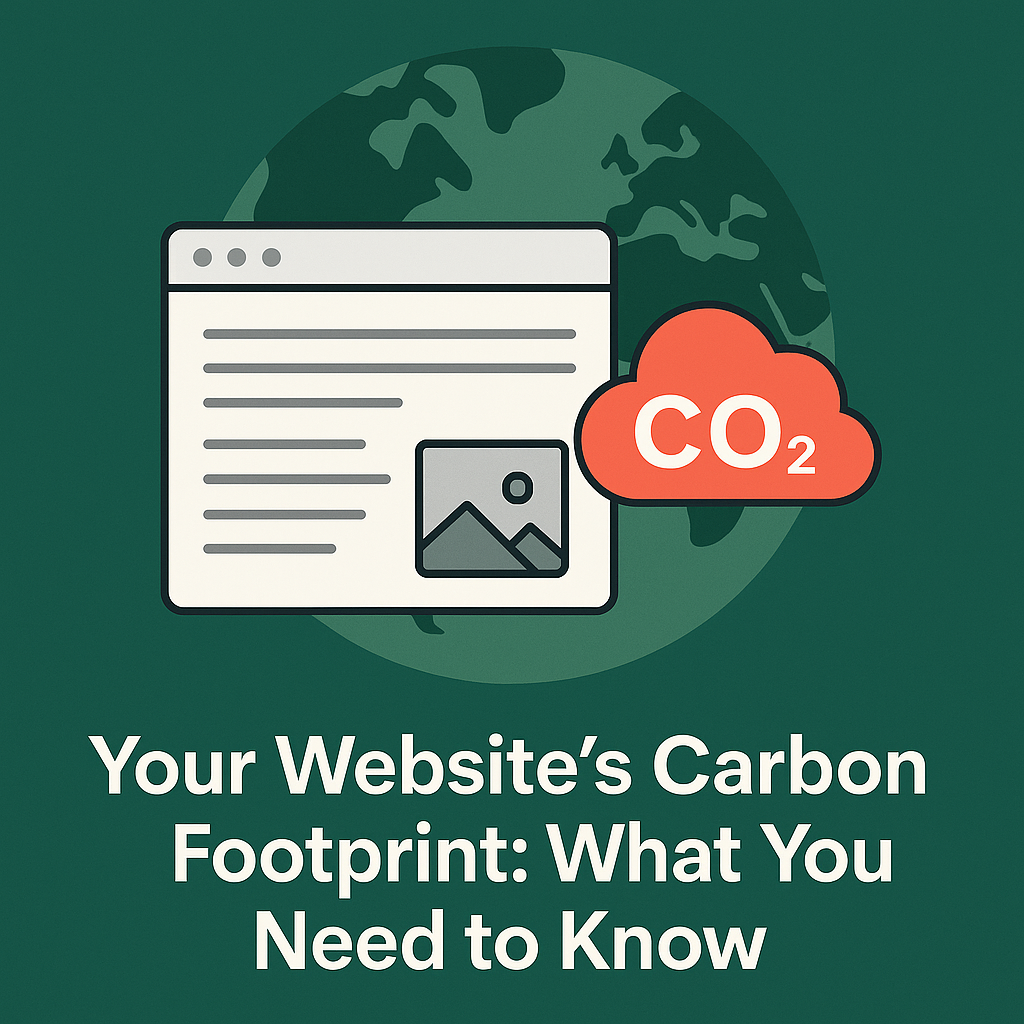
Your Website’s Carbon Footprint: What You Need to Know
The internet feels invisible, but it runs on energy and that energy comes at a cost. Every time someone loads a webpage, streams a video, or reads a blog post, servers, networks, and devices consume electricity. Multiply that by billions of daily interactions, and you start to see the environmental footprint of the web.
If you run a website, you’re part of that system. The good news? You can measure and reduce your digital emissions. Here’s what you need to know about your website’s carbon footprint and what you can do about it.
What Is a Website’s Carbon Footprint?
A website’s carbon footprint is the total amount of carbon dioxide emitted as a result of delivering its content to users. This includes
Data center energy powering the servers that store and deliver your site
Network energy transmitting data across global infrastructure
User device energy powering phones, laptops, and tablets that view your content
Even lightweight sites generate emissions. The heavier and more visited your site is, the more carbon it produces.
Why It Matters
The internet accounts for roughly 3.7 percent of global greenhouse gas emissions, about the same as the airline industry. And it’s growing fast.
If your brand cares about sustainability, you can’t ignore your digital footprint. Reducing your website’s impact is an actionable step toward climate responsibility and it aligns your values with how you operate online.
How to Measure It
Several free tools estimate your website’s carbon emissions
Website Carbon Calculator (websitecarbon.com)
Ecograder (ecograder.com)
Beacon by Wholegrain Digital
These tools analyze your pages and report on estimated carbon dioxide emissions per visit, energy usage, and even renewable energy status of your hosting provider.
What Increases Your Website’s Carbon Footprint
- Large images and videos
- Heavy JavaScript and unnecessary plugins
- Poor performance optimization
- High traffic without caching
- Non renewable hosting servers
Every extra byte costs energy.
How to Reduce Your Website’s Carbon Footprint
Here are steps to build a more sustainable website
1. Use Efficient Hosting
Choose a green hosting provider that powers servers with renewable energy or offsets carbon emissions.
2. Optimize Images and Media
Compress files, use modern formats (like WebP), and lazy-load images only when needed.
3. Minimize Code and Plugins
Clean up unnecessary scripts, reduce bloated code, and use only essential tools.
4. Implement Caching
Caching reduces server requests, speeding up load times and cutting energy use.
5. Use a CDN
Content Delivery Networks distribute load geographically, improving efficiency and reducing global energy usage.
6. Design for Performance
Simpler, faster websites aren’t just better for users—they’re better for the planet.
Your website may not have smokestacks, but it still leaves a trail of carbon. With a few smart changes, you can make your digital presence cleaner, faster, and more responsible. Sustainability isn’t just about what you sell or say, it’s also about how you operate in every corner of your business, including online.
Make your website part of the solution, not the problem.